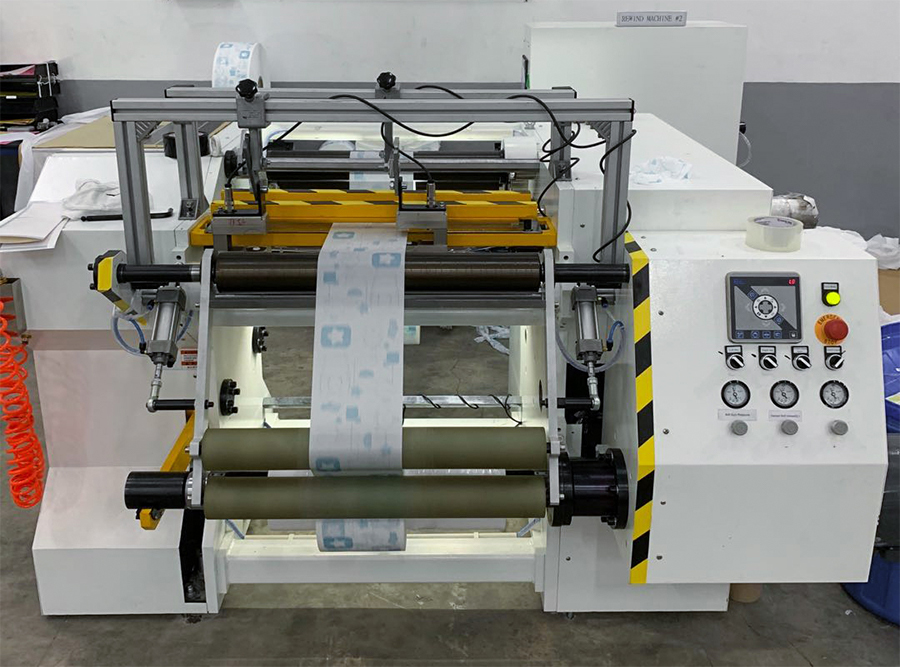
High-speed slitter rewinders avoid roll shifting and material wrinkling through a combination of precise tension control, advanced alignment systems, specialized roller designs, and anti-wrinkle technologies. These features allow the machine to handle materials at high speeds without compromising quality. Here’s how they work:
Precise Tension Control: At high speeds, even slight variations in tension can lead to issues like wrinkling or roll shifting. High-speed slitter rewinders use sophisticated tension control systems, often incorporating sensors, load cells, and feedback loops, to maintain consistent tension across the entire width of the material. These systems dynamically adjust the unwind and rewind tension as the diameter of the roll changes, preventing slack or excessive tension that could cause wrinkles.
Web Guiding and Alignment Systems: To keep the material aligned during the high-speed slitting process, slitter rewinders use web guiding systems, which detect any lateral deviation in the material. These systems adjust the position of the material in real-time, keeping it precisely aligned and reducing the risk of roll shifting or edge misalignment. Alignment is critical at high speeds, where even minor misalignments can lead to significant defects.

Anti-Wrinkle and Spread Rollers: Anti-wrinkle devices, such as bowed rollers and spreader bars, are used to evenly distribute tension across the width of the material and to stretch it slightly to remove any creases. Bowed rollers create a slight arc in the material, which helps smooth out wrinkles and ensures it enters the slitting section flat and wrinkle-free, even at high speeds.
Differential Rewind Shafts: High-speed slitter rewinders often use differential rewind shafts, which allow for slight variations in tension across different sections of the roll. These shafts can self-adjust the torque for each roll position, ensuring uniform winding tension and preventing the material layers from shifting or telescoping.
Advanced Roller Design and Surface Treatments: The rollers on high-speed machines are designed with smooth surfaces and are often coated with materials that increase grip or reduce friction, helping to move the material smoothly through the machine. Specialized roller coatings also prevent slipping, reducing the likelihood of shifting, especially with smooth or slippery materials.
Zonal Tension Control: Some machines feature zonal tension control, which allows for different tension levels in specific areas of the machine (unwind, slitting, and rewind). This feature is especially useful when working with delicate materials that are prone to wrinkling or shifting, as it provides tailored tension settings to maintain stability at each stage of the process.
Automated Control Systems and Real-Time Adjustments: High-speed machines often include automated control systems that monitor the entire operation in real time. These systems detect any signs of wrinkling or shifting and adjust tension, speed, or alignment immediately, preventing these issues from escalating as the machine continues to run at high speeds.